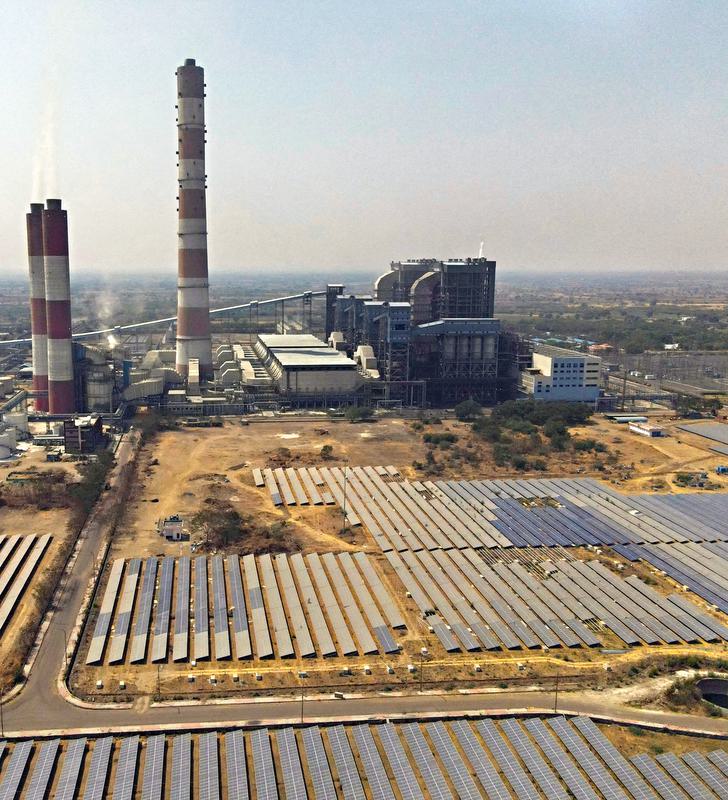Why the World Needs Better Green Technologies

- 03 Aug 2025
In News:
The 21st century energy transition is unfolding under multiple pressures: climate change, geopolitical conflicts, rising energy demand, and the pursuit of energy self-sufficiency. While the rapid deployment of silicon photovoltaics and the promotion of green hydrogen represent important milestones, critical questions remain about their long-term efficiency, sustainability, and ability to meet net-zero goals. The urgency lies not only in scaling up renewable deployment but also in accelerating innovation in next-generation green technologies.
Green Technologies: Definition and Scope
Green technologies encompass scientific innovations and engineering systems that reduce environmental harm, minimize carbon emissions, and promote sustainable energy generation and resource use. They include solar, wind, hydrogen, artificial photosynthesis, and emerging renewable fuels.
Limits of Existing Technologies
1. Silicon Photovoltaics (PV)
- Efficiency Constraints: Conventional silicon solar panels deliver only 15–18% field efficiency, while advanced alternatives such as gallium arsenide thin-film panels can reach ~47% efficiency.
- Land-Use Pressure: Low efficiency translates into vast land requirements. Doubling efficiency would halve land needs—critical for densely populated countries like India, where land is contested between urbanisation, agriculture, and biodiversity conservation.
- Geopolitical Dependence: Nearly 80% of global solar panel supply comes from China, creating vulnerabilities for India despite its domestic capacity of ~6 GW (and growing).
2. Green Hydrogen Challenges
- Energy Balance: Electrolysis requires more energy input than the usable output of hydrogen.
- Storage & Transport: Hydrogen’s low density and high leakage risk make it costly and difficult to handle.
- Conversion Losses: Transforming hydrogen into ammonia or methanol for easier transport adds further energy penalties. Thus, the "greenness" of green hydrogen is often overstated.
3. Rising CO? Despite Renewable Growth
Despite exponential solar expansion (global renewable capacity ~4.45 TWh by 2024), atmospheric CO? levels have risen from 350 ppm (1990) to ~425 ppm (2025). This underscores the gap between renewable deployment and rising global energy demand.
The Case for Disruptive Innovation
Artificial Photosynthesis (APS)
Mimicking natural photosynthesis, APS aims to produce fuels directly from sunlight, water, and CO?. Though currently in the laboratory stage, it offers a future pathway to bypass multi-step conversion processes.
Renewable Fuels of Non-Biological Origin (RFNBO)
Already being pursued in Europe, RFNBOs seek to generate carbon-neutral fuels directly from renewable resources without biomass. India, currently importing nearly 85% of its energy resources (oil, coal, gas), could benefit immensely by investing in such technologies.
Challenges to Adoption
- High R&D Costs and Long Gestation Periods for technologies like APS and multi-junction photovoltaics.
- Supply Chain Dependence on China for solar components.
- Lack of Large-Scale Validation of emerging technologies.
- Private Sector Hesitation due to uncertain returns on futuristic innovations.
Way Forward for India
- Boost R&D Funding: Allocate a larger share of climate finance to disruptive technologies such as APS, RFNBOs, and high-efficiency photovoltaics.
- Public-Private Partnerships: Encourage startups and industries to collaborate with national labs and global players.
- Technology Diversification: Develop an ecosystem combining solar, wind, hydrogen, nuclear, and waste-to-energy.
- Land-Efficient Solutions: Promote rooftop solar, floating solar, and building-integrated PVs to mitigate land scarcity.
- Global Collaboration: Strengthen engagement in initiatives such as Mission Innovation and the India–EU Green Deal for technology transfer and joint innovation.
Conclusion
Current green technologies, though pivotal, are insufficient to meet the scale of the climate crisis. The challenge is not just to be “green” in name, but to ensure measurable efficiency, sustainability, and independence. For India, energy security and climate goals converge on a common path: technology foresight, not just technology deployment. Investing in next-generation innovations today will be far cheaper than bearing the costs of climate inaction tomorrow.
